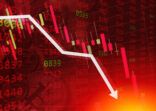The top
UBS, Allianz and Schroders Greater China equity funds were top performers in their category during the three years ending on 31 May, according to data from FE. All of them delivered an annualised return exceeding 24%.
FSA‘s monthly ranking of Greater China funds available to investors in Hong Kong and Singapore includes Hong Kong equity funds, but excludes purely Taiwanese equity funds.
Best three-year China equity fund performance
| Fund | Annualised return |
| UBS (CAY) China A Opportunity | 25.5% |
| Allianz China A-Shares | 25.0% |
| Schroder China Equity Alpha | 24.5% |
| Hang Seng China A Industry Top Index ETF | 20.8% |
Data: FE, returns in US dollars, as of 31 May 2017
Notably, the fourth on the list is the Hang Seng China A Industry Top Index ETF, which delivered an annualised three-year return of 20.8%. This means that of the 180 China equity funds listed in the FE database with at least a three-year record, 176 or 98% underperformed the ETF. Something to consider during the next active-vs-passive debate…
On a one-year basis, CUAM, BCM Vitruvius and HSBC had the top-performing funds, each delivering more than 40% during the past 12 months.
For comparison, the Hang Seng ETF delivered 26.9%, and the best-performing ETF, the Mirae Asset Horizons MSCI China, brought in 31.4% during the same period − outperforming 91% of the analysed funds.
Best one-year China equity fund performance
| Fund | Return |
| CUAM China Hong Kong Strategy | 44.7% |
| BCM Vitruvius Greater China Equity | 42.4% |
| HSBC China Momentum | 41.4% |
Data: FE, returns in US dollars, as of 31 May 2017
The bottom
The worst performers on the three-year basis as of 31 May included two “policy-driven” funds. As the funds are designed to invest in securities that “can benefit from the policies of the People’s Republic of China, Hong Kong, Macau and Taiwan”, according to a 2014 fund document from CCB International, one cannot help but conclude that predicting the effectiveness of China’s policies is tricky.
To be fair, some do it better than others. On a one-year basis, while the CCB International fund lost 1.4%, the Shenyin Wanguo fund returned 17.2%, ranking in the third quartile.
Worst three-year China equity fund performance
| Fund | Annualised return |
| CCB Intl China Policy Driven | -9.5% |
| BOCHK All Weather Hong Kong & China Equity | -6.3% |
| Shenyin Wanguo China Policy Focus | -4.9% |
Data: FE, returns in US dollars, as of 31 May 2017
The worst performers on a one-year basis include BOCHK All Weather CNY Equity fund focused on Shenzhen-listed A-shares. The Shenzhen Stock Exchange listings are skewed toward the more volatile “new economy” stocks. The Shenzhen Composite Index has had a roller-coaster year, reaching a high of 2,144 in November 2016, then dipping in January, only to rise in March and then slump to the 52-week low of 1,758 in May 2017.
Worst one-year China equity fund performance
| Fund | Return |
| BOCHK All Weather CNY Equity | -6.5% |
| Harvest CSI Small Cap 500 Index ETF | -6.0% |
| CitiFirst China StormRiders | -5.7% |
Data: FE, returns in US dollars, as of 31 May 2017
The CitiFirst China StormRiders fund invests in “securities that are both proven to have performed well in extremely distressed historical market conditions and also show potential to be among the best performing stocks in stronger markets,” according to the Bermuda-domiciled fund’s explanatory memorandum. Although it sounds good on paper, the strategy has brought only 0.9% of annualised return over the last three years and 4.8% over five years, ranking in the fourth quartile.
Best and worst three-year China equity performers

















